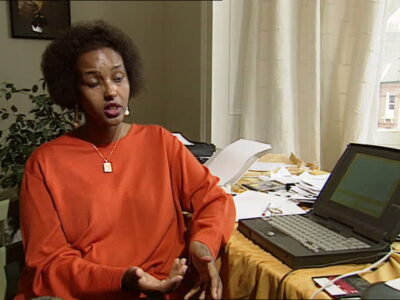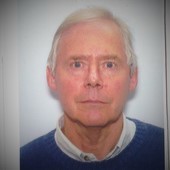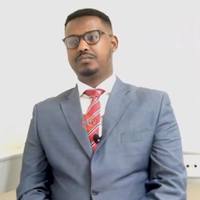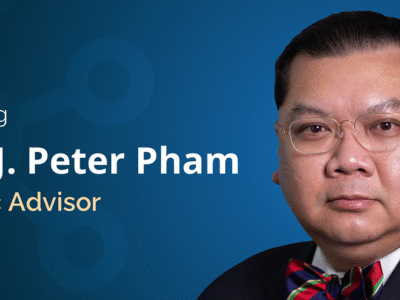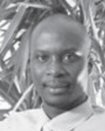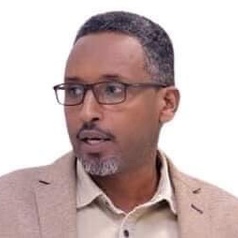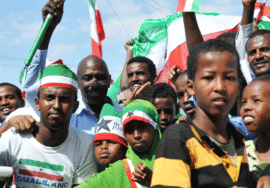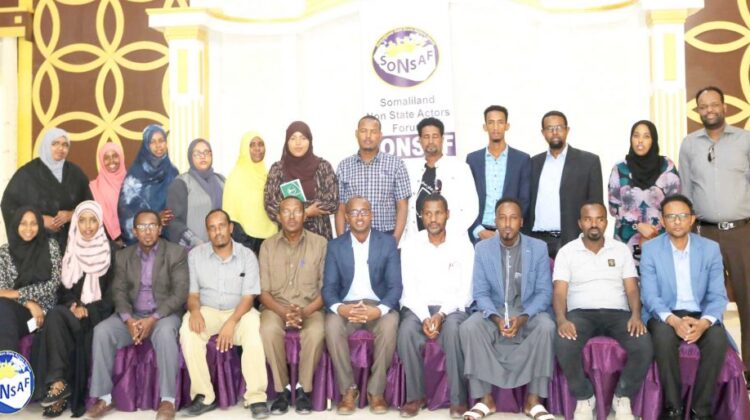
Civil Society Actors in Somaliland
Making the State Work: the Role of the Civil Society Actors in Somaliland
- INTRODUCTION
Prior to the independence of Somaliland in 1960, the region was known as the British Somaliland Protectorate approximately for 80 years (Douglas, 1961; Adam, 1994; Berouk, 2009). Following Somaliland’s celebration of its Independence Day on 26 June 1960 from the British Government, it merged with the Italian colony in the South on 1 July 1960 as a first attempt for realizing the Greater Somalia ambition and formed the first Somali Republic. Due to the hasty unification, the exhilaration and euphoria have quickly dissipated, followed by public disenchantment and resentment against the Somalia’s successive governments (Lewis, 2002; Nasir, 2013a). Although initially Somaliland people were enthusiastic about forming a union with its Italian counterpart, the euphoria quickly changed to disenchantment as many in Somaliland felt increasingly marginalized in government and other sectors of society (Mesfin, 1977). As a result of these unaddressed grievances, the popular mass in the north went for an armed struggle against the Mogadishu government which lasted for decades (Najum, 2007; Mark, 2008). In this situation, one may argue that people of Somaliland was not only alien, but also hostile to Somalia rules, institutions, and ways of doing state affairs.
Although, very often the root causes of the Somalia’s conflict are debatable, in many ways, the root causes of the troubled relations between Somaliland–Somalia goes back to the creation of the Somali state in the second half of the 20th century on unequal terms and its subsequent evolution, which deepened the asymmetrical relations between the two regions that forged suspicion, worries, incompatible and fragile relations for the decades to come and made the outcome uncertain (Hussein, 2002; Bradbury, 2008). It is not a surprise to say that the terrible roots and also the legacies of the illusion union of the 1960 served as the midwife of the Somalia’s protracted civil war and its subsequent disintegration that not only created a vacuum in the south–central regions in terms of authority and effective central governance but also generated massive displaced persons within the Horn states and also countries far beyond its borders (Kinfe, 2002; ICG, 2008; Mary, 2012).
Following Somalia’s state collapse that caused the dismantling of the state institutions throughout the country. At this stage it is important to note that Somaliland who was the chief architect of the Greater Somalia ambition and united the Italian Somaliland with unconditional union in the 1960 also spearheaded the Somalia’s state collapse and its subsequent disintegration by declaring its withdrawal from the union of the 1960 (Nasir, 2011). After it separated from the rest of Somalia, Somaliland has established its own institutions, by putting aside and ignoring the prolonged state collapse in the south.
Against all odds, Somaliland managed to restore peace and order through the collaboration of traditional and religious leaders with the engagement of the society at the grassroots to fill the vacuum left by the central authority of the military government (Ruth, 1999). For this reason and for many others, political rebuilding of Somaliland has for the most part been an internal outcome with the absence of an official recognition which has its own weight (Abokor et al. 2006).
Despite that Somalis share ethnicity, language and religion. The two regions experienced with two different colonial and administrative ways of running state affairs before the 1960 unification. For instance, the indirect rule of the British in the northern part of Somalia – the current Somaliland – appears to have ironically helped the preservation of the indigenous conflict resolution mechanisms and the culture of the society that survived to date (Schoiswohl, 2004; Joakim, 2006; Haldén, 2008). In Mogadishu, the direct rule of the Italians should be linked with the agony of mainland Somalia both before and after independence which had its roots in the endemic political corruption of Italian colonialism. From this point of view, it is justifiable to argue that the differences between the two colonial powers and the experiences inherited by these two entities from their masters may have some effects on the political practices, the administrative systems and the way of life of these two regions – the British Somaliland and the former Italian colony, now Somalia (Lewis, 2002; Mark, 2008).
Therefore, though the civil society actors in Somaliland have been on a rapid increase with an active and affirmative impact on the overall community development, state and peace building processes and democratization of the state as well, on the other hand, it was not without challenges. This paper examines the processes of peace and state building efforts in Somaliland, and explains how the peace has been sought through deliberate discussions and the practices of the non-state actors within the Somaliland society. The study analyses the success stories of Somaliland’s civil societies’ both in state – and peace building processes, its democratic underpinnings, and examines the challenges that face newly emerging civil society entities, and highlights the extent to which these institutions in Somaliland are capable of managing the numerous tensions evident within the society before further conflicts erupt.
- MAKING THE STATE WORK: IDENTIFYING THE KEY ACTORS
3.1 Traditional Elders
Prior to the arrival of the colonial powers to the Somali-inhabited regions in the Horn of Africa, traditional institutions known as ‘clan councils’ have been in effect using Customary Laws known as (Xeer)1. One can see a situation where this and other traditional, cultural and religious norms and institutions encourage helping and supporting one another (Lews, 2002; Haldén, 2008). The clan structure through which the Somali society operates has led the traditional elders to be political actors and other social formations within their specific context that relate to their way of life, while every Somali belongs or relates to a clan (Ahmed & Lewis, 1993; Judith & Judy, 2004).
Historically, during the colonial era there was no state institution due to the pastoralist lifestyle of the Somali society on one hand, and the limited power which the European colonizers permitted to the people on the other. The indirect rule of the British in the northern part of Somalia – the current Somaliland – appears to have ironically helped the preservation of the indigenous conflict resolution mechanisms and the culture of the society that survived to date (Schoiswohl, 2004; Joakim, 2006; Haldén, 2008). In contrast to the British rule, the direct rule of the Italians should be linked with the agony of mainland Somalia both before and after independence had its roots in the endemic political corruption of Italian colonialism.
As it can be observed from the above discussion, although the traditional elements of Somaliland societies have escaped to dissipate following the indirect rule of the British Empire in the north, Somalia’s government (1969–1991) had ruthlessly attempted to destroy the role of tradition in the society as part of its Marxist ideology, while the outcome of those attempts remained uncertain. Without doubt, however, the most important thing that deserves mention is that once the Somali National Movement (SNM) has been founded in 1981, it restored the role of the traditional leaders in the society aiming to mobilize support for the movement both inside and outside of the Somalia’s state, and to utilize the traditional institutions as a mechanism for resolving conflicts both within the movement’s leadership and the society at large. This became the first opportunity for the Somaliland elders in taking part the political and social activities, which finally led to achieve positive developments. As a result, this political move has served as a milestone for the future role of the elders in the decision-making processes of contemporary Somaliland.
Although SNM is perhaps the most prominent advocate of this account of the development of the Somaliland state from the Grand Conference in Buroa 1991, it has been shared by many. In this regard, the most crucial point that deserves to highlight is the role of the traditional leaders plus the society at large which remained constructive for dialogue and nation building. It is important to note that the politicians have been marginalized to involve the peace initiatives proposed by the respective clan leaders those engaged the peace and reconciliation charges (ICG, 2003; Nasir, 2011). This move was believed to be meant to demote the influence of the politicians while the politicians are widely believed to be those created the phobia, rifts, and suspicion among the clans.
Following its separation from the rest of Somalia in 1991, it opted for “customary democracy” and established hybrid system that has a root and the domino effect on its culture and authorities. This could be linked to the political and social culture that survived on the ground and made potential to exercise cultural based democratic rights (Nasir, 2013b). Following these dynamics and developments, Somaliland’s first government was established in May 1991 at the Grand Burao Conference4, where the Conference also restored the relations between the Isaaq and other northern clans (Peter, 2009; Berouk, 2009; Ruth, 1999). On the other hand, the Congress decided the state structure to be an incorporation of traditional and a western-style form of government (Medhane, 2002). This amalgamation was meant to manage internal conflict and external relations of the newly established nation in the Horn of Africa (HRW, 2009; Peter, 2009). Despite the modernization of Somaliland is the goal, the total remaking of government and the acceptance of most forms of traditional social organization means clan autonomy will largely be recognized, as was the authority of local leaders (Abokor et al. 2006). Consequently, the regime would not have to impose its will by force.
3.2 The Women
Building a lasting peace that sustains post-conflict economic, political, and social development requires the full participation of all citizens. It is increasingly recognized that the role of women in post-conflict settings has received insufficient policy attention, although women often bear a disproportionate share of war’s consequences. As war changes the demographics of a country, women may become single heads of households, supporting children, parents, or extended families (ICRW, 1998). In line with this and others, women may become uprooted, deprived of all assets, and resettled in an unfamiliar community without their usual support networks. These women also may suffer wartime sexual abuse or the loss of a family member (Nasri, 1997; Charlotte, 2007). As far as the issue of gender-differentiated impact of war concerned, it’s worth mentioning that women should participate in and benefit from post-conflict development policies and programs if peace is to be sustained.
In the Somali context, one relatively unnoticed aspect of Somalia’s political and social development is the significance of women. Grasping their place within political dynamics presupposes a better understanding of the position of women in the Somali society. This has undergone tremendous change due to almost two decades of violent conflicts and the lack of central governance structures (Lewis, 2002; Judith & Judy, 2004; Charlotte, 2007). Traditionally, women’s roles in Somali society were limited to the private sphere where they fulfilled key functions for the survival of the family. Owing to the patriarchal societal organization in patrilineal clans, political decision-making and public life was solely male-dominated (Lewis, 2002; Judith & Judy, 2004).
In the aftermath of the prolonged civil wars in Somaliland in the 1980s and 1990s that led to the total destruction and devastation of the country’s image and trauma to the society at large (Abokor et al. 2006), women have emerged as actors in their own right first to meet the basic needs of their vulnerable families and communities, while their leading ambition was to assist in rebuilding society and restoring traumatized economies. This significant role of women has needed a united effort to effectively deal with the socio-economic concerns and troubles to overcome several constraints that had been faced (Charlotte, 2007; Shukria, 2008). While the role and significance of the women in the society are
clear and remained crucial, the birth of women’s organizations was felt as essential and expected to unite their voices to address the immense problems facing Somaliland in general and the vulnerable section of the society in particular.
As a response to these challenges facing the women, women umbrella organizations were established to work for the empowerment of women to catch and reach sustainable development. These organizations have been striving to identify their vision, achieve goals concerning in building organizations’ structures and the country simultaneously5. It is important to mention that these umbrellas have engaged in different activities to fortify the capability of its member organizations and put into operation successful projects to assist the realization of its ambitions. In its efforts to make better the position of women in the country, and employ skilled persons to create ‘better tomorrow than today’. On the other hand, it collaborates with other civil umbrella organizations those operate in Somaliland.
Overall, as an expression of the women’s constructive role in state building and their sincerity, women’s organizations have been given permission to involve and participate in the democratization process of the state such as observing elections plus extending training programs to the staff intended to work for the elections. In this regard, while the citizens of the state do not seem to fully know their human rights and basic legal rights granted by the constitution, the nation’s National Electoral Commission (NEC) has selected the women organizations to engage in public awareness campaigns regarding how to vote and exercise democratic rights.
3.3 The Media
Since its establishment as an independent Republic in 1991; Somaliland has had vibrant independent media and for the most part took its role in state and peace building efforts (Nasir, 2013b). Thus, the media in Somaliland has been a major precursor for democratization and more effective governance for the last two decades which was critical to the success of the democratic revolution in Somaliland. This could be linked to the political and social culture that survived on the ground and made potential to exercise cultural based democratic rights include but not limited to: freedom of speech, expression, association, demonstration.
As far as the issue of media concerned, the media is regarded as the fourth pillar of the state in the democratic societies after the executive, the judiciary, and the legislature. In Somaliland, it is not a surprise to note that the media have taken the critical role for the state and peace building processes as well as the democratization stages7. Moreover, the all types of the private media are usually seen servicing both to the opposition and the ruling cliques, while the government-owned media in one way or another seem to miss objective reporting (Farhan et al. 2009; Nasir, 2013b). Thus, biasing its news outlets and favoring both to the government and its ruling party became apparent not only from the current regime, but also was a common practice of the former regimes.
Indeed, the most important thing that needs to be seen comparatively is the relations of the Somaliland successive governments with the non-state media. As many journalists have argued, during the Egal8 regime (1993–2002), the freedom of speech and expression has reached its peak, though occasionally there were some challenges and frictions between the media and the government. But, the successor of the Egal, the Riyale9 had had a difficult relationship with the media, while Silanyo10 – the incumbent regime – has institutionalized harsh measures and continued harassment, detention, and prison against the non-state media.
In the contemporary history of Somaliland, the first established government in 1991 led by the late President Abdurrahman Ahmed Ali11 should be regarded as the midwife of the Somaliland non-state media. During the Egal era, though the media had difficult days with his government, on the other hand the media had reached its peak and enjoyed relative freedom; while his successor, the Riyale had had a difficult relationship with the non-state media. The uneasy relations with the media eventually led the media to shift and serve as a propaganda chief for the opposition groups and help in galvanizing the public (Nasir, 2013b). For instance, the ruling KULMIYE12 has won the majority of the nationwide votes in the 2010 election, because the private media supported him.
Fundamentally, some think that democracy should tolerate all forms and types of speech. In Somaliland, one can observe that the newly elected regime has recycled the policies of its predecessor by engaging harassment and arbitrarily detention of the journalists without a prior warrant from the concerned legal bodies, while the media euphoria is waning13. Despite the Silanyo campaign, cosmetic and cathartic expressions to do this and that if elected. The harassment against the private media is still continuing. This kind of practice is challenging the democracy and the peace of that unrecognized nation in the Horn of Africa (Ibid). Indeed, the recent event of the Hubaal news paper assault and the subsequent detention of the paper’s chief editor and the manager is a clear indication that appears to show that democratically elected leaders in Africa are no less prone than those come to the power through forceful or coup d’état seeking to stay in office with what’s described as widespread abuse and manipulation of power14.
Despite these coercive measures against the non-state media coupled with the presence of some institutional weaknesses from legal to policies existed in the media. It would be no exaggeration to say that the manner and tone of the reporting of the private media in Somaliland in regards to building peace and state institutions as well as the successive democratization processes was without a doubt in breach of the sense of peace and social cohesion which served as a milestone for the Somaliland’s lasting peace and stability over the past two decades without international engagement.
- SUMMARY, CONCLUSION, AND RECOMMENDATIONS
The role of the local civil society actors in Somaliland has been in increase with an active and affirmative impact both on the overall community development, peacebuilding processes and democratization of the state. Civil society has increased socio-economic participation and their advantageous position has helped create opportunities for the vulnerable people to succeed in winning the bread of their families. Despite these positive developments, still there are challenges and misperceptions which undermine civil society’s political participation, particularly the women which the country’s customary law and traditional legacies limits their power to exercise in the realm of the state especially their political activities. In spite of the above-mentioned challenges, their improved role qualifies them to take part in the decision- making processes in every aspect of the national interest.
On the other hand, while the women and elders are believed to be an influential factor within the society who played a crucial role in fundraising missions to support the peace activities that has traversed the entire state, the media has also played unforgettable and critical role in building truth and the concept of (Ubuntu) and reconciliation among a divided society by publishing articles addressing the source of the conflict and the civil wars. In connection to that strategy, the media has adopted both indigenous and religious approaches such as the Koran and the teachings of the Prophet Mohamed (Peace and Bless be Upon Him) persuading and convincing both the victims and the perpetrators to comply with the decisions of the traditional and religious leaders.
Coming to the final conclusion of this paper, the most central focus of the civil society actors was building peace and democratization to create a system that aimed to transform the conflict into peace and the disaster to development. Thus, since the role of the Somaliland civil society foundations in building peace and democracy had been and remains encouraging; the study should point out that their role were and will remain constructive. Nevertheless, according to Tarekegn Adebo (2005) to build an entity successfully it has to build up the three pillars of the society: the State, Civil Society and the Economy, to assure the equilibrium of these pillars and to counterbalance one over another to maintain balance in their relationships and to lead sustainable peace, stability and a functioning democracy.
By Nasir M. Ali




